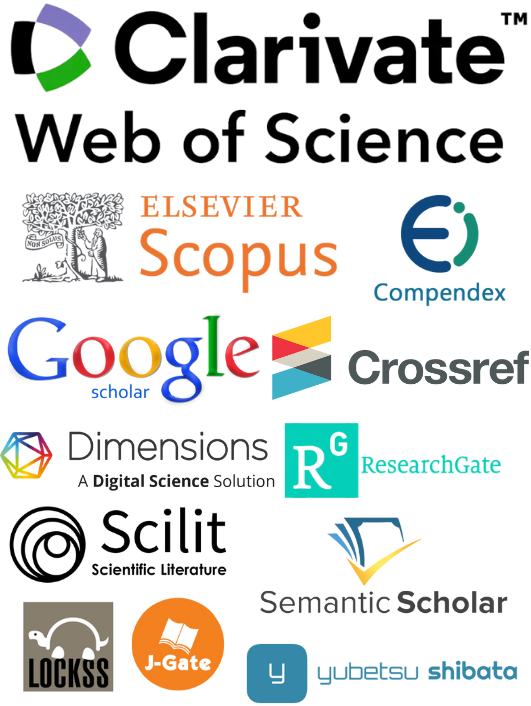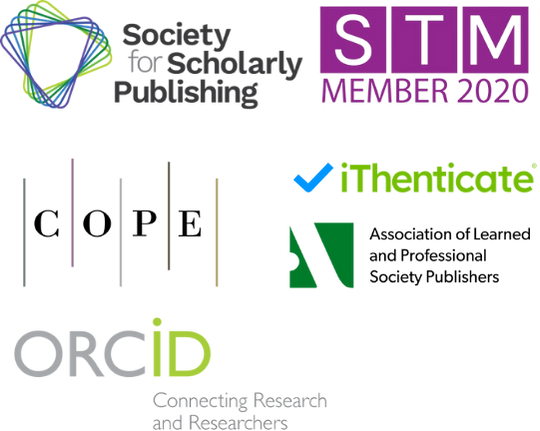Internet of Things Applied on Assistive Devices and Rehabilitation Robotics
DOI:
https://doi.org/10.71222/f7ve9328Keywords:
assistive device, robotics, smart sensors, IoT, rehabilitation, intelligent controlAbstract
This paper reviews the latest studies of assistive devices and rehabilitation robotics applied in healthcare using Internet of Things (IoT) as a base technology. The utilization of IoT in assistive devices and robots empowers elderly people and individuals with disabilities through advanced assistive technology solutions, highlighting its potential benefits and applications. The review explores the intersection of IoT sensors, assistive devices and rehabilitation robots showcasing the transformative potential of IoT in enhancing accessibility, independence, and quality of life for people with diverse abilities. Various types of smart sensors are discussed and illustrated by IoT applications in healthcare. By comparing different types of IoT sensors, we conclude the data they can measure, algorithms, principle, and applications. The other contribution of this review is to present summary research of assistive devices and rehabilitation robotics with IoT sensors. Additionally, improving the quality of life for the elderly and people with disabilities requires enhanced support through IoT technologies. Key areas that need further improvement include security, reliability, and data privacy. In the future, this work will serve as the basis for further research work in the related area. Further advancements are necessary to improve assistive devices and robotics through IoT applications.
References
1. G. Ciuti, L. Ricotti, A. Menciassi, and P. Dario, "MEMS sensor technologies for human centred applications in healthcare, physical activities, safety and environmental sensing: A review on research activities in Italy," Sensors, vol. 15, no. 3, pp. 6441–6468, 2015, doi: 10.3390/s150306441.
2. R. A. R. Ait Mouha, "Internet of things (IoT)," J. Data Anal. Inf. Process., vol. 9, no. 2, p. 77, 2021, doi: 10.4236/jdaip.2021.92006.
3. J. Zheng, D. Simplot-Ryl, C. Bisdikian, and H. T. Mouftah, "The internet of things [Guest Editorial]," IEEE Commun. Mag., vol. 49, no. 11, pp. 30–31, 2011, doi: 10.1109/MCOM.2011.6069706.
4. T. Fan and Y. Chen, "A scheme of data management in the Internet of Things," in Proc. 2nd IEEE Int. Conf. Netw. Infrastruct. Digit. Content (ICNIDC), Sept. 2010, pp. 110–114, doi: 10.1109/ICNIDC.2010.5657908.
5. Q. Zhou and J. Zhang, "Research prospect of Internet of Things geography," in Proc. 19th Int. Conf. Geoinformatics, June 2011, pp. 1–5, doi: 10.1109/GeoInformatics.2011.5981045.
6. I. U. Din et al., "The Internet of Things: A review of enabled technologies and future challenges," IEEE Access, vol. 7, pp. 7606–7640, 2018, doi: 10.1109/ACCESS.2018.2886601.
7. K. Banerjee et al., "Online camera lidar fusion and object detection on hybrid data for autonomous driving," in Proc. IEEE Intell. Veh. Symp. (IV), June 2018, pp. 1632–1638, doi: 10.1109/IVS.2018.8500699.
8. L. Caltagirone, M. Bellone, L. Svensson, and M. Wahde, "LIDAR–camera fusion for road detection using fully convolutional neural networks," Rob. Auton. Syst., vol. 111, pp. 125–131, 2019, doi: 10.1016/j.robot.2018.11.002.
9. G. Koginov et al., "An algorithm to reduce human–robot interface compliance errors in posture estimation in wearable ro-bots," Wearable Technol., vol. 3, p. e30, 2022, doi: 10.1017/wtc.2022.29.
10. E. Martini et al., "Gait training using a robotic hip exoskeleton improves metabolic gait efficiency in the elderly," Sci. Rep., vol. 9, no. 1, p. 7157, 2019, doi: 10.1038/s41598-019-43628-2.
11. F. Mohamedali and N. Matoorian, "Support dementia: using wearable assistive technology and analysing real-time data," in Proc. 2016 Int. Conf. Interact. Technol. Games (ITAG), Oct. 2016, pp. 50–54, doi: 10.1109/iTAG.2016.15.
12. H. Aloulou et al., "Deployment of assistive living technology in a nursing home environment: methods and lessons learned," BMC Med. Inform. Decis. Mak., vol. 13, pp. 1–17, 2013, doi: 10.1186/1472-6947-13-42.
13. M. Elkahlout et al., "IoT-based healthcare and monitoring systems for the elderly: a literature survey study," in Proc. 2020 Int. Conf. Assistive Rehabil. Technol. (iCareTech), Aug. 2020, pp. 92–96, doi: 10.1109/iCareTech49914.2020.00025.
14. T. Mohammed et al., "DIESEL: A novel deep learning-based tool for SpMV computations and solving sparse linear equation systems," J. Supercomput., vol. 77, no. 6, pp. 6313–6355, 2021, doi: 10.1007/s11227-020-03489-3.
15. M. E. E. Alahi et al., "Integration of IoT-enabled technologies and artificial intelligence (AI) for smart city scenario: Recent advancements and future trends," Sensors, vol. 23, no. 11, p. 5206, 2023, doi: 10.3390/s23115206.
16. D. Sehrawat and N. S. Gill, "Smart sensors: Analysis of different types of IoT sensors," in Proc. 2019 3rd Int. Conf. Trends Electron. Informatics (ICOEI), Apr. 2019, pp. 523–528, doi: 10.1109/ICOEI.2019.8862778.
17. W. V. Shi, "Recent advances of sensors for assistive technologies," J. Comput. Commun., vol. 3, no. 5, pp. 80–87, 2015, doi: 10.4236/jcc.2015.35010.
18. I. Modern, "New trends in smart sensors for industrial applications—part I," IEEE Trans. Ind. Electron., vol. 64, no. 9, p. 7281, 2017, doi: 10.1109/TIE.2017.2725558.
19. Á. Kaló et al., "Indoor localization simulation framework for optimized sensor placement to increase the position estimation accuracy," Ann. Math. Inform., vol. 51, pp. 29–39, 2020, doi: 10.33039/ami.2020.07.002.
20. S. Mihcin et al., "Investigation of wearable motion capture system towards biomechanical modelling," in Proc. 2019 IEEE Int. Symp. Med. Meas. Appl. (MeMeA), June 2019, pp. 1–5, doi: 10.1109/MeMeA.2019.8802208.
21. I. Wechsler et al., "Method for using IMU-based experimental motion data in BVH format for musculoskeletal simulations via OpenSim," Sensors, vol. 23, no. 12, p. 5423, 2023, doi: 10.3390/s23125423.
22. C. H. Lin et al., "Assistive technology using integrated flexible sensor and virtual alarm unit for blood leakage detection during dialysis therapy," Healthc. Technol. Lett., vol. 3, no. 4, pp. 290–296, 2016, doi: 10.1049/htl.2016.0051.
23. N. Li et al., "Design and implementation of a sensor-based wireless camera system for continuous monitoring in assistive environments," Pers. Ubiquitous Comput., vol. 14, pp. 499–510, 2010, doi: 10.1007/s00779-009-0271-2.
24. T. Kosar et al., "A case study on the design and implementation of a platform for hand rehabilitation," Appl. Sci., vol. 11, no. 1, p. 389, 2021, doi: 10.3390/app11010389.
25. L. Meng, X. Kong, and D. Taniguchi, "Dangerous situation detection for elderly persons in restrooms using center of gravity and ellipse detection," J. Robot. Mechatron., vol. 29, no. 6, pp. 1057–1064, 2017, doi: 10.20965/jrm.2017.p1057.
26. D. Yacchirema, J. S. De Puga, C. Palau, and M. Esteve, "Fall detection system for elderly people using IoT and big data," Procedia Comput. Sci., vol. 130, pp. 603–610, 2018, doi: 10.1016/j.procs.2018.04.110.
27. S. Cagnoni, G. Matrella, M. Mordonini, F. Sassi, and L. Ascari, "Sensor fusion-oriented fall detection for assistive technologies applications," in Proc. 9th Int. Conf. Intell. Syst. Des. Appl., Nov. 2009, pp. 673–678, doi: 10.1109/ISDA.2009.203.
28. Q. Yang and Z. Shen, "Active aging in the workplace and the role of intelligent technologies," in Proc. IEEE/WIC/ACM Int. Conf. Web Intell. Intell. Agent Technol. (WI-IAT), vol. 2, Dec. 2015, pp. 391–394, doi: 10.1109/WI-IAT.2015.33.
29. S. Vutinuntakasame, V. R. Jaijongrak, and S. Thiemjarus, "An assistive body sensor network glove for speech-and hear-ing-impaired disabilities," in Proc. Int. Conf. Body Sensor Netw., May 2011, pp. 7–12, doi: 10.1109/BSN.2011.13.
30. P. Mellodge and C. Vendetti, "Remotely monitoring a patient's mobility: A digital health application," IEEE Potentials, vol. 30, no. 2, pp. 33–38, 2011, doi: 10.1109/MPOT.2010.939453.
31. M. Buckley, R. Vaidyanathan, and W. Mayol-Cuevas, "Sensor suites for assistive arm prosthetics," in Proc. 24th Int. Symp. Comput.-Based Med. Syst. (CBMS), Jun. 2011, pp. 1–6, doi: 10.1109/CBMS.2011.5999153.
32. J. W. Kang, B. S. Kim, and M. J. Chung, "Development of assistive mobile robots helping the disabled work in a factory environment," in Proc. IEEE/ASME Int. Conf. Mechatron. Embedded Syst. Appl. (MESA), Oct. 2008, pp. 426–431, doi: 10.1109/MESA.2008.4735729.
33. A. Graser et al., "A supportive friend at work: Robotic workplace assistance for the disabled," IEEE Robot. Autom. Mag., vol. 20, no. 4, pp. 148–159, 2013, doi: 10.1109/MRA.2013.2275695.
34. J. Fasola and M. J. Mataric, "Using socially assistive human–robot interaction to motivate physical exercise for older adults," Proc. IEEE, vol. 100, no. 8, pp. 2512–2526, 2012, doi: 10.1109/JPROC.2012.2200539.
35. P. T. Jardine and S. N. Givigi, "A robust model-predictive guidance system for autonomous vehicles in cluttered environ-ments," IEEE Syst. J., vol. 13, no. 2, pp. 2034–2045, 2018, doi: 10.1109/JSYST.2018.2806629.
36. R. Unnikrishnan, K. Moawad, and R. R. Bhavani, "A physiotherapy toolkit using video games and motion tracking tech-nologies," in Proc. IEEE Global Humanitarian Technol. Conf.: South Asia Satellite (GHTC-SAS), 2013, pp. 90–95, doi: 10.1109/GHTC-SAS.2013.6629895.
37. A. O. Bajeh et al., "Internet of robotic things: its domain, methodologies, and applications," in Emergence of Cyber Physical System and IoT in Smart Automation and Robotics, Cham: Springer, 2021, pp. 135–146. ISBN: 9783030662219.
38. W. Shi and J. Liu, "IoT based assistive robot system design," in Proc. 7th Int. Conf. Robot. Autom. Sci. (ICRAS), Jun. 2023, pp. 1–5, doi: 10.1109/ICRAS57898.2023.10221588.
39. J. Corredor and J. Sofrony, "Shared control based on roles for telerobotic systems," in Proc. IX Latin Amer. Robot. Symp. & IEEE Colombian Conf. Autom. Control, 2011, pp. 1–6, doi: 10.1109/LARC.2011.6086815.
40. J. S. Kim and J. H. Ryu, "Shared teleoperation of a vehicle with a virtual driving interface," in Proc. 13th Int. Conf. Control, Autom. Syst. (ICCAS), 2013, pp. 851–857, doi: 10.1109/ICCAS.2013.6704032.
41. M. Gao, J. Oberländer, T. Schamm, and J. M. Zöllner, "Contextual task-aware shared autonomy for assistive mobile robot teleoperation," in Proc. IEEE/RSJ Int. Conf. Intell. Robots Syst., 2014, pp. 3311–3318, doi: 10.1109/IROS.2014.6943023.
42. D. Z. Dehuai, X. Gang, and W. Hai, "Study on teleoperated home care mobile robot," in Proc. IEEE Int. Conf. Robot. Biomimetics (ROBIO), 2007, pp. 43–46, doi: 10.1109/ROBIO.2007.4522132.
43. M. Ababneh et al., "Gesture controlled mobile robotic arm for elderly and wheelchair people assistance using Kinect sensor," in Proc. 15th Int. Multi-Conf. Syst., Signals Devices (SSD), Mar. 2018, pp. 636–641, doi: 10.1109/SSD.2018.8570547.
44. R. L. Hsu, M. Abdel-Mottaleb, and A. K. Jain, "Face detection in color images," IEEE Trans. Pattern Anal. Mach. Intell., vol. 24, no. 5, pp. 696–706, 2002, doi: 10.1109/34.1000242.
45. D. Bastos, M. Shackleton, and F. El-Moussa, "Internet of things: A survey of technologies and security risks in smart home and city environments," in Living in the Internet of Things: Cybersecurity of the IoT-2018, Stevenage, U.K.: IET, 2018, p. 30, doi: 10.1049/cp.2018.0030.
46. N. Ramkumar and D. K. Renuka, "An analysis on augmentative and assistive technology for the speech disorder people," in Proc. Int. Conf. Intell. Syst. Commun., IoT Security (ICISCoIS), 2023, pp. 601–607, doi: 10.1109/ICISCoIS56541.2023.10100439.
47. M. Yağanoğlu, "Real time wearable speech recognition system for deaf persons," Comput. Electr. Eng., vol. 91, p. 107026, 2021, doi: 10.1016/j.compeleceng.2021.107026.
48. H. Lu, D. Li, J. Oyekan, and C. Maple, "A survey on assistive chair and related integrated sensing techniques," in Proc. Int. Conf. Manipulation, Manuf. Meas. Nanoscale (3M-NANO), Suzhou, China, Aug. 2013, pp. 129–134, doi: 10.1109/3M-NANO.2013.6737398.
49. D. Chugo, K. Fujita, Y. Sakaida, S. Yokota, and K. Takase, "Development of depressurization system for a seated patient on a wheelchair," in Proc. IEEE Int. Conf. Mechatronics, Istanbul, Turkey, Apr. 2011, pp. 615–620, doi: 10.1109/ICMECH.2011.5971189.
50. A. Pervez and J. Ryu, "Safe physical human robot interaction—past, present and future," J. Mech. Sci. Technol., vol. 22, pp. 469–483, 2008, doi: 10.1007/s12206-007-1109-3.
Downloads
Published
Issue
Section
License
Copyright (c) 2025 Jason Liu, Wei Shi, Ahmet Turkmen, Jeff Leismer (Author)

This work is licensed under a Creative Commons Attribution 4.0 International License.


